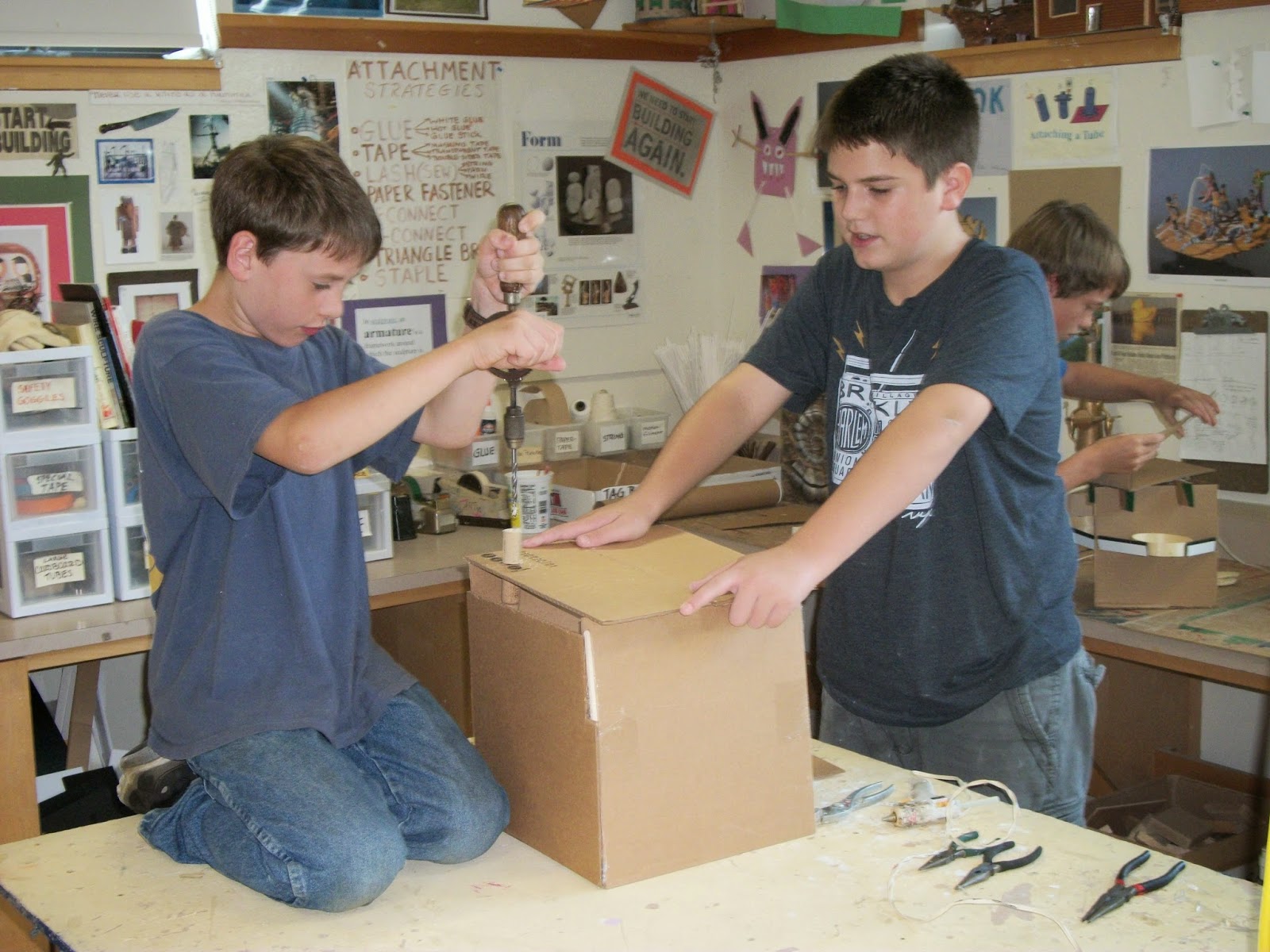Two years ago, a 6th grader made a series of books right after I
opened a “Bookmaking Center.” Last year, she had no interest in
this activity, even after I set everything up hoping to entice her. Now an 8th grader, she asked: “when are
you going to open the bookmaking center?” My response? “Tomorrow”
of course!
 |
| Temporary center occupying flex-table |
Sometimes these “ephemeral centers” pop up overnight like a flush
of mushrooms on the lawn. I try to keep one table free for this sort
of flexible use. This week, the Bookmaking Center appeared here. When
interest wanes, a new offering will take its place.
The center contains tools, materials and references of the bookmaker.
For tools we have; an awl, large needles, a bone folder, beeswax, binding clips, double-sided
tape, hole-punches, a Japanese book drill and an antique book press.
There is a box of “cover stock” (mat board and cardboard donated
from the local frame shop), a box of papers in various sizes for
pages, and another box containing my collected hand-made books which
serve as inspiration and models for possible books styles and
designs. Several books about bookmaking are there too, including
“how-to's” and a collection of amazing artist-made books.
 |
| Artist-made books and classroom experiments |
Instead of providing “how to make a book” lessons for everyone,
interested or not, I encourage interested students to browse through
the sample books, leaf through the instructional manuals and then
engineer their own book in their own way, for their own purpose.
Today a 6th grader asked for some help binding her book.
She already designed a cover and a back and selected her page-papers. She
needed a way to secure the pages within her beautiful cover. Together
we worked, private-lesson style, to find solutions to her technical issues while also addressing aesthetic considerations. Together we learned to
create a hinged front cover so the book could open freely. After
examining several of the model books, this artist decided to try an interesting Japanese binding which would hold the covers in place and
secure the pages. I was needed to tug the needle through the holes
that she drilled with an awl – a job that required considerable
hand-strength and a pair of pliers!
 |
| "E's" beautiful book |
While we worked, I kept an ear an eye on the rest of the class, which
was buzzing happily along. The fact that each artist in the room
could work with autonomy allowed me to focus on the one-on-one bookmaking lesson. In the future, this new bookmaker will be able to
help peers by sharing what she now knows and coaching others, just as I coached her.
In this way, the studio-learning setting
cultivates both learners and teachers: all teachers can be
learners and all learners can be teachers.




















































